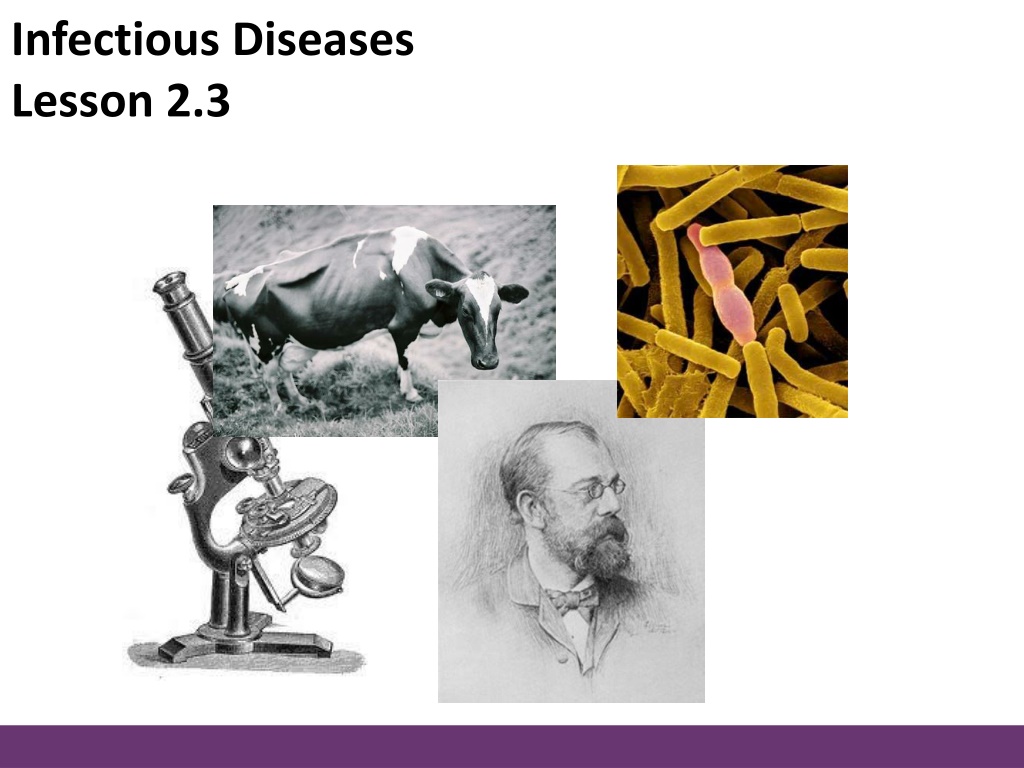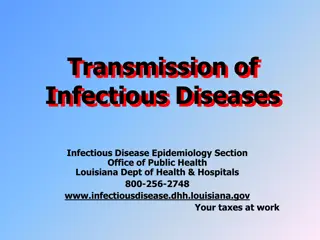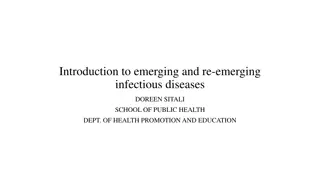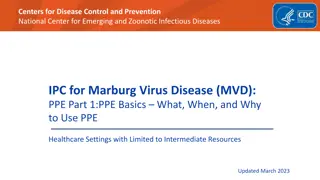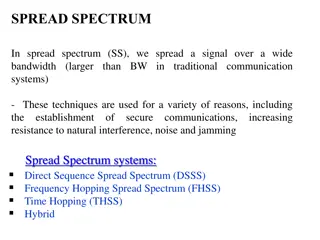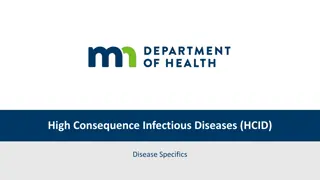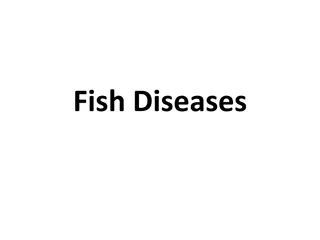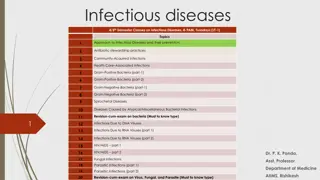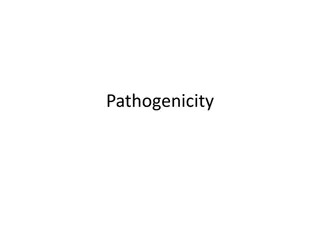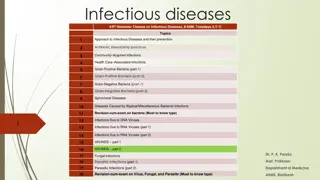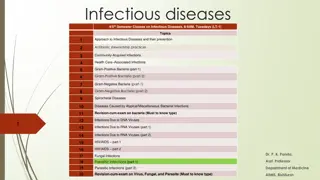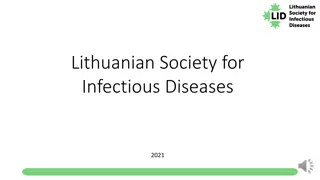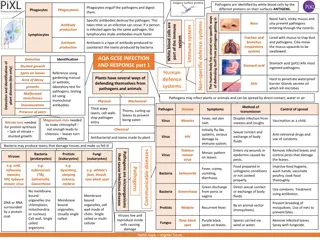Understanding the Spread of Infectious Diseases
Explore the dynamics of disease spread, vaccination effects, and simulation activities in a lesson on infectious diseases. Dive into data analysis and Koch's postulates to understand the role of infectious agents in disease causation.
Download Presentation

Please find below an Image/Link to download the presentation.
The content on the website is provided AS IS for your information and personal use only. It may not be sold, licensed, or shared on other websites without obtaining consent from the author. Download presentation by click this link. If you encounter any issues during the download, it is possible that the publisher has removed the file from their server.
E N D
Presentation Transcript
Infectious Diseases Lesson 2.3
Lesson Objectives: After finishing today s lesson you will be able to: explain the process by which a disease spreads. explain the effects of vaccination on the spread of a disease.
Do Now What would you expect to observe if a disease is contagious?
Activity: Simulating the spread of an infectious disease
Discussion If we vaccinated half the class and ran the simulation again how many people would get infected?
Lets look at some data! No vaccination DAY 1 2 3 4 5 6 Total cases New cases 100 200 400 800 1,600 3,200 0 100 200 400 800 1600 If 50% of people were vaccinated DAY 1 2 3 4 5 6 Total cases New cases 100 150 225 337.5 506.25759.375 0 50 75 112.5 168.75253.125
Wrap Up How would you prove a disease is caused by an infectious agent?
Wrap Up How would you prove a disease is caused by an infectious agent? Koch s postulates Robert Koch 1. 2. 3. 4. Association It must always be present in every case but not in healthy animals. Isolation It must be isolated from the sick animal into pure culture.* Causation The pure microbe must cause the disease in a healthy animal. Re-isolation When the microbe is re-isolated from the sick animal it must be the same as the original. *Pure culture of a microbe means that there is only one type of microbe growing.
Homework Review Koch s postulates and explain whether typhoid fever (lesson 2.1) fulfills each postulate.
